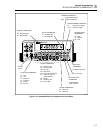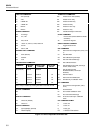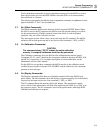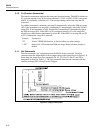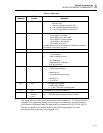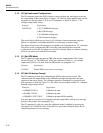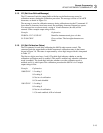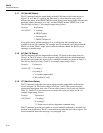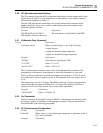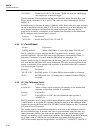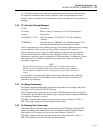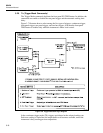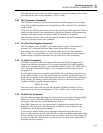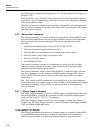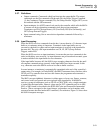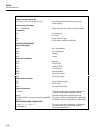
Remote Programming
DEVICE-DEPENDENT COMMAND SET
3
3-15
3-20. G8 (Get Instrument Identification)
The G8 command copies the 8842A instrument identification into the output buffer in the
format shown in Figure 3-6. The identification is represented by four comma separated
fields that are interpreted in Table 3-1.
The first field indicates the manufacturer, the second indicates the instrument model
number, the third is always zero, and the fourth indicates the version number of the
IEEE-488 interface software.
Example Explanation
FLUKE,8842A,0,V4.0 CR LF This instrument is a Fluke 8842A with IEEE-
488 interface software version 4.0.
3-21. N (Numeric Entry Command)
Format Explanation
N<numeric entry> Where <numeric entry> is one of the following:
<signed integer>
<signed real number without exponent>
<signed real number>E<signed exponent>
Example Explanation
"N12001" Enters the five-digit integer 12001
"N-1.23E2" Enters -1.23 x 10
2
"N+154.33E-1" Enters 1.5433 x 10
1
The N command enters numeric values for use with subsequent Put commands. The
interpretation of the numeric value depends on which Put command it is used with.
The E can be used within an N command for entering an exponent of 10. The N can be
used without an E, but an E requires a prior N. The exponent can be any integer from -9
to +9.
The mantissa may exceed 5-1/2 digits. The 8842A accurately calculates the appropriate
exponent and then disregards all but the first 5-1/2 digits of the mantissa. However, a
syntax error will occur if the numeric entry overflows the input buffer.
Example Explanation
"N123456789" Enters +1.23456 x 10
8
3-22. Put Commands
The Put commands P0 through P3 set up the 8842A’s configuration and operating modes
by entering ("putting") information in the appropriate registers. The put commands are
described further in the following paragraphs.
3-23. P0 (Put Instrument Configuration)
Format Explanation
N<frst>P0 Where <frst> is a four-digit integer interpreted as arguments for the F,
R, S, and T commands.
Example Explanation



